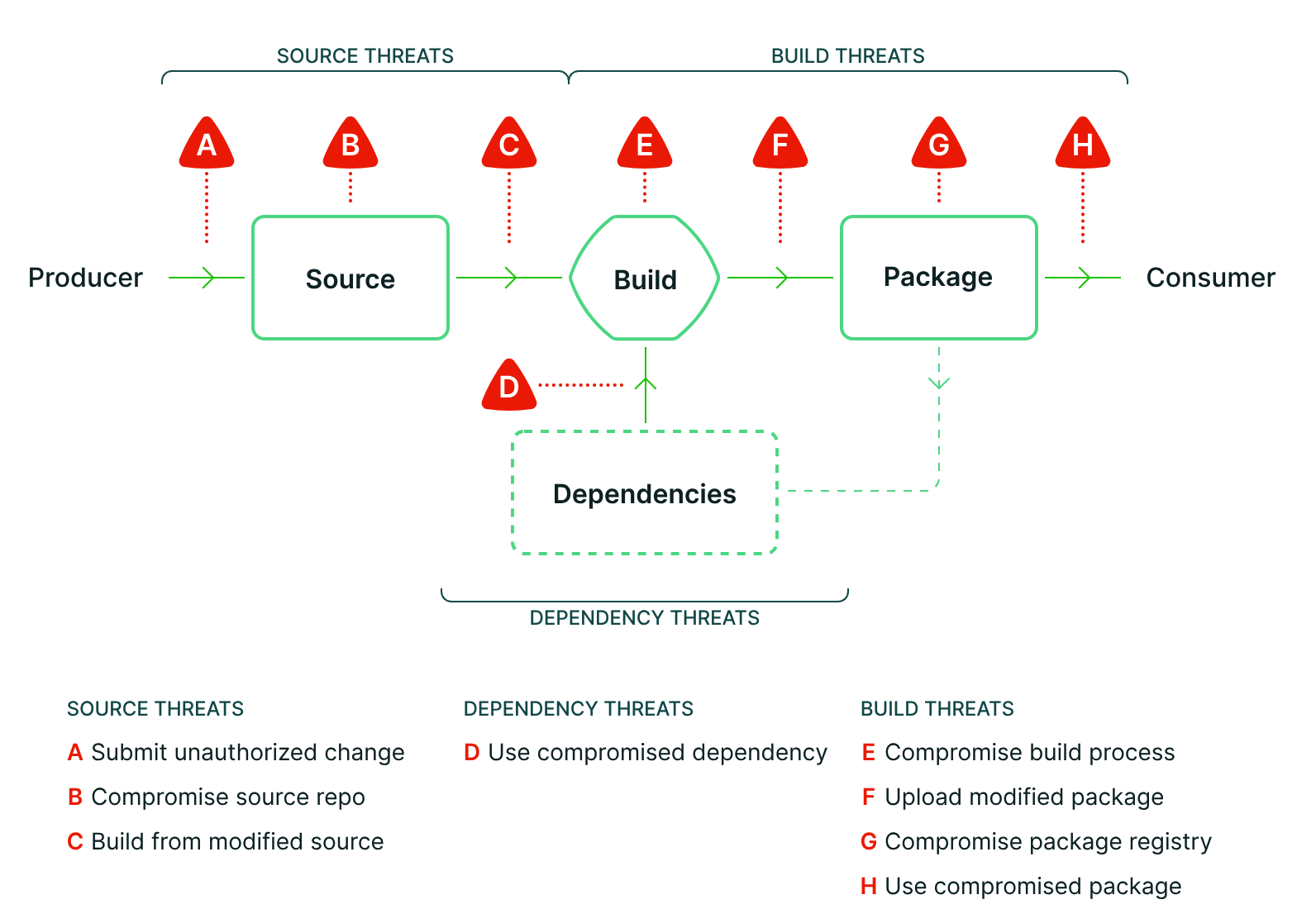目录
直接插入排序:
1. (程序题)
折半插入排序:
希尔排序:
3. (程序题)
冒泡排序 :
2. (程序题)
快速排序 :
5. (程序题)
简单选择排序:
4. (程序题)
堆排序:
6. (程序题)
前置知识:
稳定排序:如果有两个相等的元素在排序前后的相对顺序保持不变,那么排序算法是稳定的。
直接插入排序:
直接插入排序(Insertion Sort)是一种简单直观的排序算法,其基本思想是将待排序的序列分成两部分,已排序部分和未排序部分。初始时,已排序部分只包含第一个元素,然后从未排序部分取出元素,插入到已排序部分的适当位置,使得已排序部分仍然有序。重复这个过程,直到未排序部分为空。
基本思想:排序方法中,从未排序序列中依次取出元素与已排序序列中的元素进行比较,将其放入已排序序列的正确位置上。
1. (程序题)
试设计算法实现直接插入排序,输出在第m趟排序后的结果
输入数据两行:
第1行:多个需要排序的整数,以0结束
第2行:数m,表示第几趟的插入算法
输入:
2 5 3 4 8 7 9 6 1 0
5
输出:
2 3 4 5 7 8 9 6 1
#include <iostream>
#include <string>
#include <cstring>
#include <cmath>
#include <ctime>
#include <algorithm>
#include <utility>
#include <stack>
#include <queue>
#include <vector>
#include <set>
#include <math.h>
#include <map>
#include <sstream>
#include <deque>
#include <unordered_map>
using namespace std;
typedef long long LL;
const int N = 1e4;
int ar[N];
int n;
// 插入排序函数
void sort(int m) {
for (int i = 2; i <= n && m; i++) {
m--;
if (ar[i - 1] > ar[i]) {
ar[0] = ar[i];
int j;
for (j = i - 1; j > 0 && ar[0] < ar[j]; j--)
ar[j + 1] = ar[j];
ar[j + 1] = ar[0];
}
}
}
int main() {
do {
cin >> ar[++n];
} while (ar[n]);
n--;
int m;
cin >> m;
//m = n - 1;
sort(m);
for (int i = 1; i <= n; i++) {
cout << ar[i] << " ";
}
return 0;
}
用例1:
输入
2 5 3 4 8 7 9 6 1 0 5
输出
2 3 4 5 7 8 9 6 1
用例2:
输入
2 5 3 1 6 10 19 4 18 22 0 6
输出
1 2 3 5 6 10 19 4 18 22
折半插入排序:
折半插入排序是在直接插入排序的基础上的改进,使用二分查找确定插入的位置,虽然移动的次数不变,但是查找的效率得到了明显的提升。
#include <iostream>
#include <string>
#include <cstring>
#include <cmath>
#include <ctime>
#include <algorithm>
#include <utility>
#include <stack>
#include <queue>
#include <vector>
#include <set>
#include <math.h>
#include <map>
#include <sstream>
#include <deque>
#include <unordered_map>
using namespace std;
typedef long long LL;
const int N = 1e4;
int ar[N];
int n;
// 插入排序函数
void sort() {
for (int i = 2; i <= n ; i++) {
if (ar[i - 1] > ar[i]) {
ar[0] = ar[i];
int j;
int l = 1, r = i-1, mid, ret = 1;
while (l <= r) {
mid = l + (r - l) / 2;
if (ar[mid]<=ar[0]) {
l = mid + 1;
}
else {
r = mid - 1;
ret = mid;
}
}
for (j = i - 1; j >= ret ; j--)
ar[j + 1] = ar[j];
ar[ret] = ar[0];
}
}
}
int main() {
do {
cin >> ar[++n];
} while (ar[n]);
n--;
sort();
for (int i = 1; i <= n; i++) {
cout << ar[i] << " ";
}
return 0;
}
希尔排序:
希尔排序也是出入排序的一种改进版,通过固定的距离的跳跃取数将序列分为多组,每组内进行插入排序,最终实现序列的排序。 不难看出,简单插入排序就是间距为1的希尔排序。
希尔排序的时间复杂度是一个很难求解的问题,但大量的实验和研究表明,当增量序列为 dt[k]=2^(t-k+1)-1 时,时间复杂度为 O(n^(3/2)),其中 t 为排序趟数,1<=k<=t<=log2(n+1),当 n 趋向与无穷时 复杂度可以为 O(n(log2(n))^2)。
3. (程序题)
试编写算法,实现希尔排序。
输出在第m趟排序后的结果
输入数据两行:
第1行:多个需要排序的整数,以0结束
第2行:数m,表示第几趟的希尔排序算法
增量序列统一取【5,3,1】
输入:
1 8 4 6 7 9 5 3 2 11 0
1
输出:
1 5 3 2 7 9 8 4 6 11
#include <iostream>
#include <string>
#include <cstring>
#include <cmath>
#include <ctime>
#include <algorithm>
#include <utility>
#include <stack>
#include <queue>
#include <vector>
#include <set>
#include <math.h>
#include <map>
#include <sstream>
#include <deque>
#include <unordered_map>
using namespace std;
typedef long long LL;
const int N = 1e4;
int n;
int ar[N], d[3] = {5, 3, 1};
void F(int u) {
for (int i = 1 + u; i <= n; i++) {
if (ar[i] < ar[i - u]) {
ar[0] = ar[i];
int j;
for (j = i - u; j > 0 && ar[0] < ar[j]; j -= u)
ar[j + u] = ar[j];
ar[j + u] = ar[0];
}
}
}
void sort(int m) {
for (int i = 0; i < 3 && i < m; i++) {
F(d[i]);
}
}
int main() {
do {
cin >> ar[++n];
} while (ar[n]);
n--;
int m;
cin >> m;
sort(m);
for (int i = 1; i <= n; i++) {
cout << ar[i] << " ";
}
return 0;
}
输入
3 15 9 15 10 4 8 12 20 13 0 2
输出
3 8 4 13 10 9 15 12 20 15
输入
1 8 4 6 7 9 5 3 2 11 0 1
输出
1 5 3 2 7 9 8 4 6 11
输入
100 81 4 66 7 9 55 3 2 11 9 0 3
输出
2 3 4 7 9 9 11 55 66 81 100
冒泡排序 :
冒泡排序(Bubble Sort)是一种简单的排序算法,它重复地遍历待排序数组,一次比较两个元素,如果它们的顺序错误就交换它们。遍历数组的工作是重复地进行直到没有再需要交换,也就是数组已经排序完成。
基本思想:排序时扫描待排序记录序列,顺次比较相邻的两个元素的大小,逆序时就交换位置。
2. (程序题)
试设计算法实现冒泡排序。输出在第m趟排序后的结果
输入数据两行:
第1行:多个需要排序的整数,以0结束
第2行:数m,表示第几趟后的冒泡算法
输入:
2 4 3 9 6 8 7 5 1 03
输出:
2 3 4 6 5 1 7 8 9
#include <iostream>
#include <string>
#include <cstring>
#include <cmath>
#include <ctime>
#include <algorithm>
#include <utility>
#include <stack>
#include <queue>
#include <vector>
#include <set>
#include <math.h>
#include <map>
#include <sstream>
#include <deque>
#include <unordered_map>
using namespace std;
typedef long long LL;
const int N = 1e4;
int ar[N];
int n;
void sort(int m) {
for (int i = 1, flg = 0; i <= m; i++, flg = 0) {
for (int j = 1; j <= n - i; j++) {
if (ar[j] > ar[j + 1]) {
flg = 1;
ar[0] = ar[j];
ar[j] = ar[j + 1];
ar[j + 1] = ar[0];
}
}
if (flg == 0)
break;
}
}
int main() {
do {
cin >> ar[++n];
} while (ar[n]);
n--;
int m;
cin >> m;
sort(m);
for (int i = 1; i <= n; i++) {
cout << ar[i] << " ";
}
return 0;
}
输入
2 4 3 9 6 8 7 5 1 0 3
输出
2 3 4 6 5 1 7 8 9
输入
3 15 9 15 10 4 8 12 0 4
输出
3 4 8 9 10 12 15 15
快速排序 :
快速排序是由冒泡排序改进而得。在冒泡排序中,只对相邻的两个记录进行比较,因此每次交换两个相邻记录时只能消除一个逆序。如果能通过两个(不相邻)的记录的一次交换,消除多个逆序,则会大大加快排序的速度。快速排序方法中的一次交换可消除多个逆序。
算法步骤:
选择一个数,通常为第一个,通过交换排序将比这个数大的放到右边,比这个数小的放到左边,然后再使用递归方法,同样的处理两边的数,知道所有的数都有序。
平均时间复杂度O(nlog2(n))
不难发现快速排序的递归过程是一棵二叉树
快速排序(Quick Sort)是一种基于分治思想的排序算法。它选择一个基准元素,将数组分为两个子数组,使得左边的元素都小于基准元素,右边的元素都大于基准元素。然后递归地对左右子数组进行排序。快速排序是一种高效的排序算法,其平均时间复杂度为 O(n log n)。
5. (程序题)
试编写算法实现快速排序算法。
输入:
1 8 4 6 7 9 5 3 2 0
输出:
1 2 3 4 5 6 7 8 9
#include <iostream>
#include <string>
#include <cstring>
#include <cmath>
#include <ctime>
#include <algorithm>
#include <utility>
#include <stack>
#include <queue>
#include <vector>
#include <set>
#include <math.h>
#include <map>
#include <sstream>
#include <deque>
#include <unordered_map>
using namespace std;
typedef long long LL;
const int N = 1e4;
int n;
int ar[N];
void sort(int L, int R) {
if (L >= R)
return;
int t = ar[L];
int l = L, r = R;
while (l < r) {
while (ar[r] >= t && l < r) {
r--;
}
if (ar[r] < t)
ar[l] = ar[r];
while (ar[l] <= t && l < r) {
l++;
}
if (ar[l] > t)
ar[r] = ar[l];
}
ar[l] = t;
sort(L, l - 1);
sort(l + 1, R);
}
int main() {
do {
cin >> ar[++n];
} while (ar[n]);
n--;
sort(1, n);
for (int i = 1; i <= n; i++) {
cout << ar[i] << " ";
}
return 0;
}
输入
1 8 4 6 7 9 5 3 2 0
输出
1 2 3 4 5 6 7 8 9
输入
9 15 3 15 10 4 8 12 0
输出
3 4 8 9 10 12 15 15
简单选择排序:
算法思路:
依次选出最小、第二小、第三小……最大的数,存入对应的位置。
4. (程序题)
试设计算法实现简单选择排序。
输出在第m趟排序后的结果
输入数据两行:
第1行:多个需要排序的整数,以0结束
第2行:数m,表示第几趟的排序
输入:
1 8 4 6 7 9 5 3 2 03
输出:
1 2 3 6 7 9 5 4 8
#include <iostream>
#include <string>
#include <cstring>
#include <cmath>
#include <ctime>
#include <algorithm>
#include <utility>
#include <stack>
#include <queue>
#include <vector>
#include <set>
#include <math.h>
#include <map>
#include <sstream>
#include <deque>
#include <unordered_map>
using namespace std;
typedef long long LL;
const int N = 1e4;
int n;
int ar[N], d[3] = { 5, 3, 1 };
void sort(int m) {
for (int i = 1; i < n && m; i++) {
m--;
int mn = i;
for (int j = i; j <= n; j++) {
if (ar[j] < ar[mn]) {
mn = j;
}
}
ar[0] = ar[i];
ar[i] = ar[mn];
ar[mn] = ar[0];
}
}
int main() {
do {
cin >> ar[++n];
} while (ar[n]);
n--;
int m;
cin >> m;
sort(m);
for (int i = 1; i <= n; i++) {
cout << ar[i] << " ";
}
return 0;
}
输入
1 8 4 6 7 9 5 3 2 0 3
输出
1 2 3 6 7 9 5 4 8
输入
53 82 9 233 43 14 55 9 4 67 0 4
输出
4 9 9 14 43 233 55 82 53 67
输入
44 9 89 14 43 233 55 82 53 67 0 5
输出
9 14 43 44 53 233 55 82 89 67
堆排序:
在计算机科学中,堆(Heap)是一种基于树的数据结构,它具有以下特点:
-
完全二叉树结构: 堆通常被实现为一棵完全二叉树,这意味着除了最底层,其他层的节点都被填满,而且最底层的节点都集中在左侧。
-
堆序性质: 堆分为最大堆和最小堆。在最大堆中,每个节点的值都大于或等于其子节点的值;而在最小堆中,每个节点的值都小于或等于其子节点的值。
堆通常用于实现优先队列等抽象数据类型,其中最大(或最小)元素可以迅速地被查找和删除。
根据堆的性质,我们可以将堆分为两种主要类型:
-
最大堆(Max Heap)(大根堆): 最大堆的每个节点的值都大于或等于其子节点的值。根节点包含堆中的最大元素。
-
最小堆(Min Heap)(小根堆): 最小堆的每个节点的值都小于或等于其子节点的值。根节点包含堆中的最小元素。
堆排序通常使用数组来存储,但不限于数组,也可以用链表的方式进行存储,这里为方便起见使用数组进行演示。
这里首先要知道怎么用数组模拟完全二叉树:输出 key[1……n] 中 key[s] 的左节点为 key[2*s] ,右节点为 key[2*s+1]。且有 n 个节点的二叉树的深度 不会超过 log2(n)+1,非叶子节点的下标最大的节点下标为 n/2。
知道的这些就可进行推排序了:首先将所有的数据存入数组 key 中,从对的特点不难看出堆与二叉树的许多操作一样,具有递归性质,所以我们在对的排序过程中也会利用这一递归性质:搜先利用 HeapAdjust 函数对堆进行调整,使它成为大根堆或小根堆,这里以大根堆为例;先从非叶子节点的下标最大的节点 n/2 开始,对以 n/2 下标为根的二叉树进行堆排序,再对以 n/2-1,n/2-2……1 为根的二叉树进行堆排序。利用堆排序的递归性质,最大限度的提高算法的效率。
HeapAdjust 函数:比较当前点与它左右孩子的大小,将它与他们三者中的最大值交换,继续以跟踪最大值,重复上述过程,知道不在变化为止。过程可以理解为大的值不断地往上浮,小的值不断往下沉。
时间复杂度O(nlog2(n))
6. (程序题)
试编写算法实现堆排序算法。
输出分两行:
第1行:输出初始堆,以行输出
第2行:输出排好序的数列
输入:
1 8 4 6 7 9 5 3 2 0
输出:9 8 5 6 7 4 1 3 2
1 2 3 4 5 6 7 8 9
#include<iostream>
#include<string>
#include<cstring>
#include<cmath>
#include<ctime>
#include<algorithm>
#include<utility>
#include<stack>
#include<queue>
#include<vector>
#include<set>
#include<math.h>
#include<map>
#include<sstream>
#include<deque>
#include<unordered_map>
using namespace std;
typedef long long LL;
const int N = 1e4;
typedef struct Heap {
int key[N];
int lenth;
}Heap;
void print(Heap& h) {
for (int i = 1; i <= h.lenth; i++) {
cout << h.key[i] << " ";
}
cout << endl;
}
void HeapAdjust(Heap&h,int u,int len) {
/*cout << "KKKKKKKKKKKKKK ";
print(h);*/
for (int j = 2 * u; j <=len; j *= 2) {
if (j < len && h.key[j] < h.key[j + 1])j++;
if (h.key[u] < h.key[j]) {
//cout << "PPPPPPPPPPPPP " << h.key[u] << " " << h.key[j] << endl;
swap(h.key[u], h.key[j]);
u = j;
//cout << "PPPPPPPPPPPPP " << h.key[u] << " " << h.key[j] << endl;
}
else {
break;
}
}
//cout << "KKKKKKKKKKKKKK ";
//print(h);
}
void HeapFun(Heap& h) {
for (int i = h.lenth / 2; i > 0; i--) {
//cout << "____________" << i << endl;
HeapAdjust(h, i,h.lenth);
}
print(h);
for (int i = h.lenth ; i > 1; i--) {
swap(h.key[1], h.key[i]);
HeapAdjust(h, 1,i-1);
}
print(h);
}
int main() {
Heap h;
h.lenth = 0;
do {
cin>>h.key[++h.lenth];
} while (h.key[h.lenth]);
h.lenth--;
HeapFun(h);
return 0;
}
用例1:
输入
1 8 4 6 7 9 5 3 2 0
输出
9 8 5 6 7 4 1 3 2 1 2 3 4 5 6 7 8 9
用例2:
输入
2 87 39 49 34 62 53 6 44 98 0
输出
98 87 62 49 34 39 53 6 44 2 2 6 34 39 44 49 53 62 87 98






